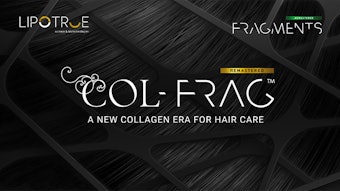O/W, pH, qs, INCI, surfactant … Language is a dynamic tool for communication and an interesting indication of the evolution of a population. Encyclopedias and dictionaries are continually updated to reflect the new words used in present-day communication.
When Albert Kligman, PhD, made up the term cosmeceutical in the early 1980s, he not only modernized the language of cosmetics, he made an interesting declaration—makeup had evolved beyond just adding moisture or pigment to the skin.
Reminded by the US Food and Drug Administration that the claims made on the label determine whether a product is considered a cosmetic or drug, and not necessarily the ingredients, the cosmetic industry forged ahead with ingredients designed to activate mechanisms in the skin and intended to promote attractiveness. Thus, actives emerged and continue to find new applications in personal care.
Competition is fierce between companies entering the actives scene. Aggressive launches run the gamut from powerful synthetics to delivery-enhanced naturals applied in cellulite treatments, antiaging serums, microcirculation stimulators and wellness-promoting products. Whatever path the manufacturers of actives take, in the end they all hope to arrive at the same place—in the hands of the consumer.
This issue of Cosmetics & Toiletries magazine focuses on treatments incorporating such actives in preventive skin care, antiaging treatments, and anticellulite and spa treatments. Huber and Schreier examine the survival strategies adapted by watermelon from growing under extreme conditions such as drought, UV radiation and high salt concentration, to apply in protective products for skin.
γ-Poly glutamic acid, a peptide, is considered by Ben-Zur and Goldman for its moisturizing and exfoliating properties as a value-added component to personal care products. Additionally, Rieger reviews literature on the relatively new topic of neuropeptides and their impact on skin biology with a major focus on toll-like receptors and their contribution to the skin’s immune system.
Costa-Strachan, PhD, looks at spa treatments designed for slimming effects. Newer approaches using ingredients to achieve these effects are described, including the newest method of body contouring to reach the United States—mesotherapy. Finally, chitin nanofibrils are explored by Morganti et al. as natural compounds to generate the formation of a hygroscopic molecular film that slows water evaporation to keep the skin hydrated as well. Recent improvements to isolate chitin nanofibrils suggest its application in skin rehydration, wound healing and maintenance of cutaneous homeostasis.
Introducing innovative products geared to work and work well ensures customer loyalty and free word-of-mouth promotion as the word gets out. The word has gotten out about cosmeceuticals, which today can be found listed in Merriam-Webster’s Dictionary. As formulators invent new cosmetic products for previously inconceivable effects, the language of the industry will continue to be shaped by making up words to describe such inventions: a testimony to progress.

![Lead Image2 [nas] 800x450px](https://img.cosmeticsandtoiletries.com/files/base/allured/all/image/2024/10/Lead_image2__NAS__800x450px.6704042d635b8.png?auto=format%2Ccompress&fit=crop&h=191&q=70&w=340)








